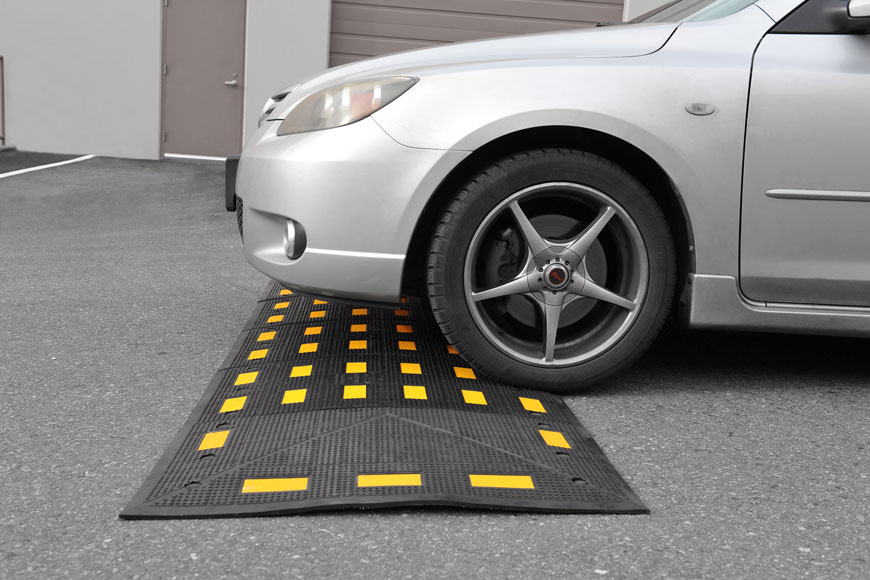Speed bumps, also known as speed humps, are a common traffic calming measure used to slow down vehicles and improve safety in residential and commercial areas. If you’re considering installing speed bumps in your community, it’s important to understand the different types of speed bumps, the costs involved, and the regulations you’ll need to follow.
There are several types of speed bumps to choose from, each with their own unique characteristics and benefits. The most common types include:
- Asphalt speed bumps: These are the most affordable and easiest to install, but they can be more easily damaged and less durable than other types.
- Concrete speed bumps: These are more durable and long-lasting than asphalt, but they are also more expensive and difficult to install.
- Rubber speed bumps: These are a good middle ground, offering durability and ease of installation, but at a higher cost than asphalt.
No matter what type of speed bump you choose, it’s important to ensure that it is properly installed to ensure smooth traffic flow and safety. This means considering the location and spacing of the speed bumps, as well as the materials and installation methods used.
Easy Installation of Rubber Speed Bumps
Rubber speed bumps are a practical solution to control vehicle speed and improve safety. Unlike traditional asphalt or concrete bumps, our rubber speed bumps do not require digging a trench, making installation faster and simpler.
Tools and Materials Needed
-
Rubber speed bumps
-
Drill with masonry bit (if installing on asphalt/concrete)
-
Anchor bolts or screws
-
Measuring tape
-
Chalk or marking paint
-
Safety gear (gloves, glasses, high-visibility vest)
Step-by-Step Installation
1. Measure and Mark the Area
-
Measure the road width and determine the number of bumps needed.
-
Mark exact locations using chalk or paint. Recommended spacing: 2–4 meters, depending on traffic.
2. Position the Speed Bump
-
Place the rubber speed bump at the marked location.
-
Ensure it is straight and centered across the lane.
3. Secure the Speed Bump
-
Drill holes into the road surface through the pre-made holes in the bump.
-
Insert anchor bolts or screws to fix the bump firmly.
4. Check Stability
-
Press down and ensure the bump does not move.
-
Adjust if necessary before allowing traffic.
Safety Tips
-
Always wear protective gear.
-
Use cones or signs to alert drivers during installation.
Speed bumps Maintenance
-
Inspect periodically for damage.
-
Replace worn or loose bumps immediately.
Rubber speed bumps make your streets safer with minimal work. No digging, no heavy materials, just fast, effective speed control.
When it comes to costs, the price of speed bumps will vary depending on the type of speed bump you choose, as well as the location and size of the installation. As a general rule, asphalt speed bumps are the most affordable, followed by rubber and then concrete. It’s important to budget for the costs of materials, labor, and any necessary permits or inspections.
In addition to costs and installation, it’s important to be aware of the regulations surrounding speed bump installation. These regulations can vary depending on your location, so it’s important to check with your local government or transportation department for specific requirements. In general, you’ll need to obtain the necessary permits and approvals, and ensure that the speed bumps meet any local or state standards or guidelines.
To ensure smooth traffic flow and safety in your community, it is important to get a professional to do the installation, or at least have a professional oversee the work. This will ensure that the speed bumps are installed correctly and meet all regulations and standards.
In conclusion, installing speed bumps can be an effective way to slow down traffic and improve safety in residential and commercial areas. By understanding the different types of speed bumps, the costs involved, and the regulations you’ll need to follow, you can make an informed decision about whether speed bumps are the right choice for your community. With the right planning and execution, speed bumps can ensure smooth traffic flow and improved safety for all.

